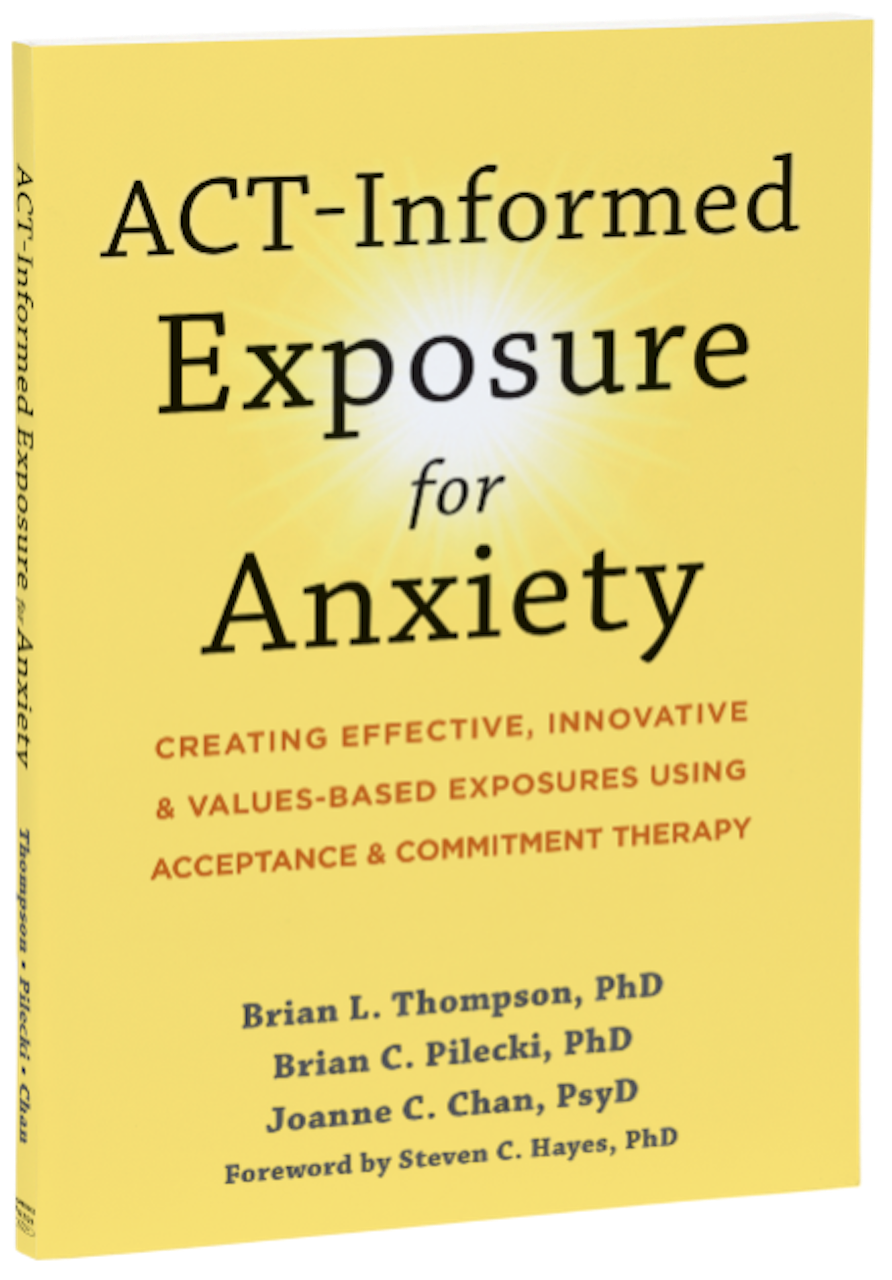Experiential Learning is Crucial in Exposure for OCD
May 11, 2023
Exposure conducted through the lens of acceptance and commitment therapy (ACT) is gradually developing a solid research base. When compared against one another, research to date has indicated that ACT-informed exposure compares favorably to traditional exposure, that is exposure focused on habituation and rooted in the emotional processing theory (Arch et al., 2012; Twohig et al., 2018). Both perform well on primary outcomes (e.g., symptom reduction), and both result in increases in psychological flexibility, the ability to remain in contact with uncomfortable experiences while taking action towards what’s important to us.
If the theoretical orientation doesn’t matter so much, are there other ways that exposure therapists may improve how they deliver treatment?
Ong and colleagues (2022) examined data from a randomized controlled trial comparing ACT-informed exposure against traditional exposure for OCD that was published earlier (i.e., Twohig et al., 2018). Here’s what they found:
- Experiential learning when creating exposure exercises was more important than number or duration of exposures. As a process-oriented treatment, ACT emphasizes experiential learning through use of exercises and metaphors. The researchers found that this focus on the experiential was particularly crucial in delivering effective exposure therapy. Emphasis on experiential learning was related to better outcomes.
What this suggests is that it’s more important for ACT therapists to use exercises and metaphors to help client learn, understand, and contact ACT processes such as acceptance or willingness than to try to explain these concepts in a way that’s more didactic.
If you’re interested in reading more about ACT experiential approaches, I’ve written in greater detail about helping orient clients through experiential exercises to the notion of acceptance in preparing for ACT-informed exposure, as well as specific ACT experiential exercises such as Finger Traps and Tug-of-War.
- Quality over quantity. The researchers also found that the number of exposure exercises participants engaged in during the course of exposure therapy was less important than the quality of these exposure exercises. By “quality,” the authors are referring to exposures that incorporated more direct experiential learning, as discussed in the bullet point above. This finding supports something that even traditional exposure therapists have known for years: that when clients don’t fully engage the exposure, it can undercut the exposure’s effectiveness. As I note in my recent book on ACT-informed exposure therapy:
Whether one is conducting traditional exposure or ACT-informed exposure, if a client is unable to be present with and practice willingness during exposure, they may struggle to increase psychological flexibility in general, and the exposure may reinforce anxiety and avoidance (e.g., Benito et al., 2018; Jordan et al., 2017; Ong et al., 2022)
Instead, it’s important to choose exposure exercises that clients are willing to fully engage and be present when practicing.
- The importance of collaboration. When working with unacceptable thoughts, participants that felt that their therapist really collaborated with them in designing exposure exercises were less concerned about those thoughts. This suggests the importance of creating a treatment alliance where clients feel you’re working with them, and that they feel they have a say in how you’re developing exposure exercises.
- Rationale. In an earlier blog post, I walked through research on the importance of having rationale for exposure therapy grounded in theory. Ong and colleagues further found that rationale was particularly important in working with clients with symmetry obsessions. Symmetry obsessions involve a focus on order, perfectionism, and a “right” way of doing things. The authors conclude that the structure offered by a well-crafted treatment rationale may be particularly helpful for clients with symmetry obsessions.
In sum, the authors conclude that teaching exposure clients about acceptance experientially is crucial, as this was associated with greater treatment compliance, increased psychological flexibility, and improved symptom severity. They further suggest this focus on the experiential may result in more efficient (e.g., shorter) courses of treatment.
If you’re interested in reading the Ong and colleagues article yourself, you can download a pre-print copy here.
If you’re unfamiliar with the differences between ACT-informed exposure and traditional exposure for OCD, you might check out an earlier blog post I wrote.
Author: Brian Thompson, PhD
My new book, ACT-Informed Exposure for Anxiety is out now. Click here to purchase!
Learn more about our live, virtual, and accredited courses from the best minds in evidence-based therapy and Acceptance & Commitment Therapy (ACT), brought to you by Portland Psychotherapy Training.
Join our mailing list!
Subscribe and get curated research reports, essays, and special course offers – right to your inbox.
We hate SPAM. We will never sell your information, for any reason.


